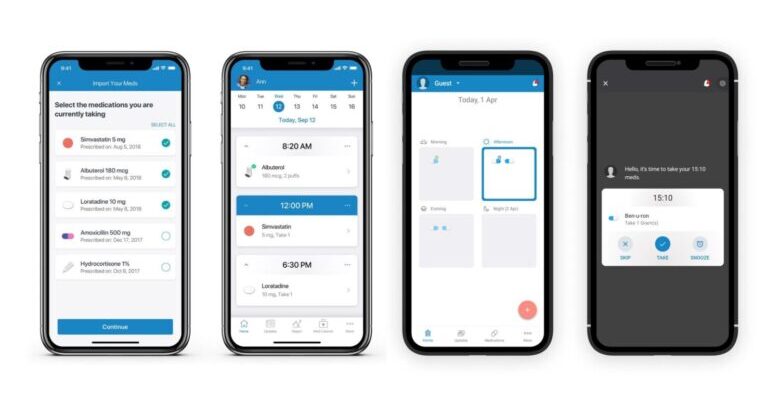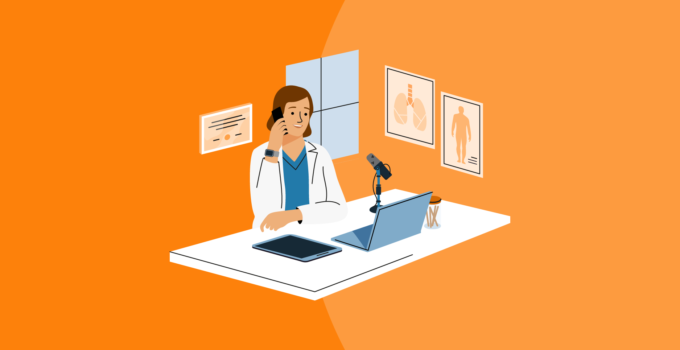People started learning about telemedicine software during the pandemic crisis and quickly realized how beneficial modern technology is, especially when you cannot visit your doctor. The main indicator for that is that this software is still used, although the pandemic is considered over, and many medical facilities are trying to develop their own to make their functioning much easier.
However, there are still people who are not familiar with modern technology and the benefits of telemedicine software, and we will explain everything about it further in the text below.
What is it?

Source: science.org
Let’s start with the basics and explain what telemedicine software is and why its usage is extremely important for all medical facilities. It represents a way of electronic communication between doctors and patients and helps specialists track and treat their patients without the need for physical contact.
It was the perfect way to save many lives during the pandemic, when physical contact was dangerous, as it was the way of spreading the infection, but there is no doubt it can be useful even now when the pandemic is over. It is much easier for doctors to check all the relevant information about their patients, as they are all stored online and easy to reach, and for patients to get their treatment much faster than ever.
How to Develop it?

Source: techsors.com
The main problem that many medical facilities face is how to develop reliable telemedicine software that can be upgraded and used for many years and grants the safety and security of sensitive information. Because of that, we will create a step-by-step guide to help you do it in the best possible way, as it should flawlessly work in order to be useful.
Step 1: It All Starts With an Idea
Everything in this world starts with an idea, and if the idea is to develop telemedicine software, the next step is to go into detail. You need to focus on the main features the app will have, how it can improve the communication between doctors and patients and accessibility to the medical records they both need to see.
It is usually a lot of work for one person, and it is better to work with a qualified team that can help with more ideas and solutions and create a great product in the end. Do not worry, as in this phase, the idea is all you need, and everything else should be done by technical vendors specialized in developing software.
Step 2: Analyzing the Market and Competitors

Source: travelpayouts.com
Once the idea is developed, it is time to perform a detailed market analysis and competitors and check whether the software is ready for development or if something needs to be changed. It is an important step because sometimes the ideas of what software should provide can differ for the patients and the doctors, and everything should be done properly before the medical facility starts using it.
The IT team is in charge of targeting the audience and checking their needs further because if they do not like what telemedical software can provide to them, they will simply decide not to use it. Besides all that, it is important to pay attention to the integration with various systems, as all the important information must be easily shared with other medical facilities if needed.
Step 3: Improving Safety
Medical records of patients contain sensitive information that must remain safe and secure, and providing it to the patients is one of the most important steps in developing telemedical software. Users must be sure that information about their medical conditions and their private information, such as name, address, and credit card information, will remain private, and the developer must grant them that.
If any of this information falls into the wrong hands, the users can face serious problems, and because of that, safety and privacy are something that you must pay attention to.
Step 4: Simple Design

Source: imaginarycloud.com
Many people are not aware of how important the design of the application they create is and simply do not pay enough attention to it. The importance of the design is huge, and it is necessary to keep it simple and easy to navigate because not all patients who want to use it are good at technology.
The application should remain simple, so even beginners can easily find what they need, book a meeting with their doctor or a video conference, or send them a message.
Step 5: Preparing the Application for Usage
For most developers, this is the most important stage, as it is the final step before presenting the app to the users, which means everything should work and be ready for publishing. Of course, there is still a testing phase after that, but if this step is done properly, a testing phase will only show that, and there will not be a need to change anything.
Since there are too many things to think about, developing telemedical software is not a job for one person, and the best idea is to find a telemedicine app development partner like Interexy, as they will give you peace of mind, and you can focus more on other details.
Step 6: Testing and Evaluating Customer Reviews

Source: primal.com.my
The final step of telemedicine software development is presenting the app to the customers and checking their reviews. It is extremely important, as everything depends on their response, and if they find the app useful, they will use it.
This phase is vital, as by evaluating their reviews, you can see potential problems and errors and fix them as soon as possible. If they do not have any complaints, the app is ready to use, and there is no need to change anything.
The bottom line
As you can see, developing telemedicine software is not an easy job and requires a team of people specialized in that, but it can change the way one medical facility operates for the better. It has a lot of benefits and makes everything easier for patients and doctors, and there is no doubt it will be a vital part of medical facilities’ communication in the near future.




